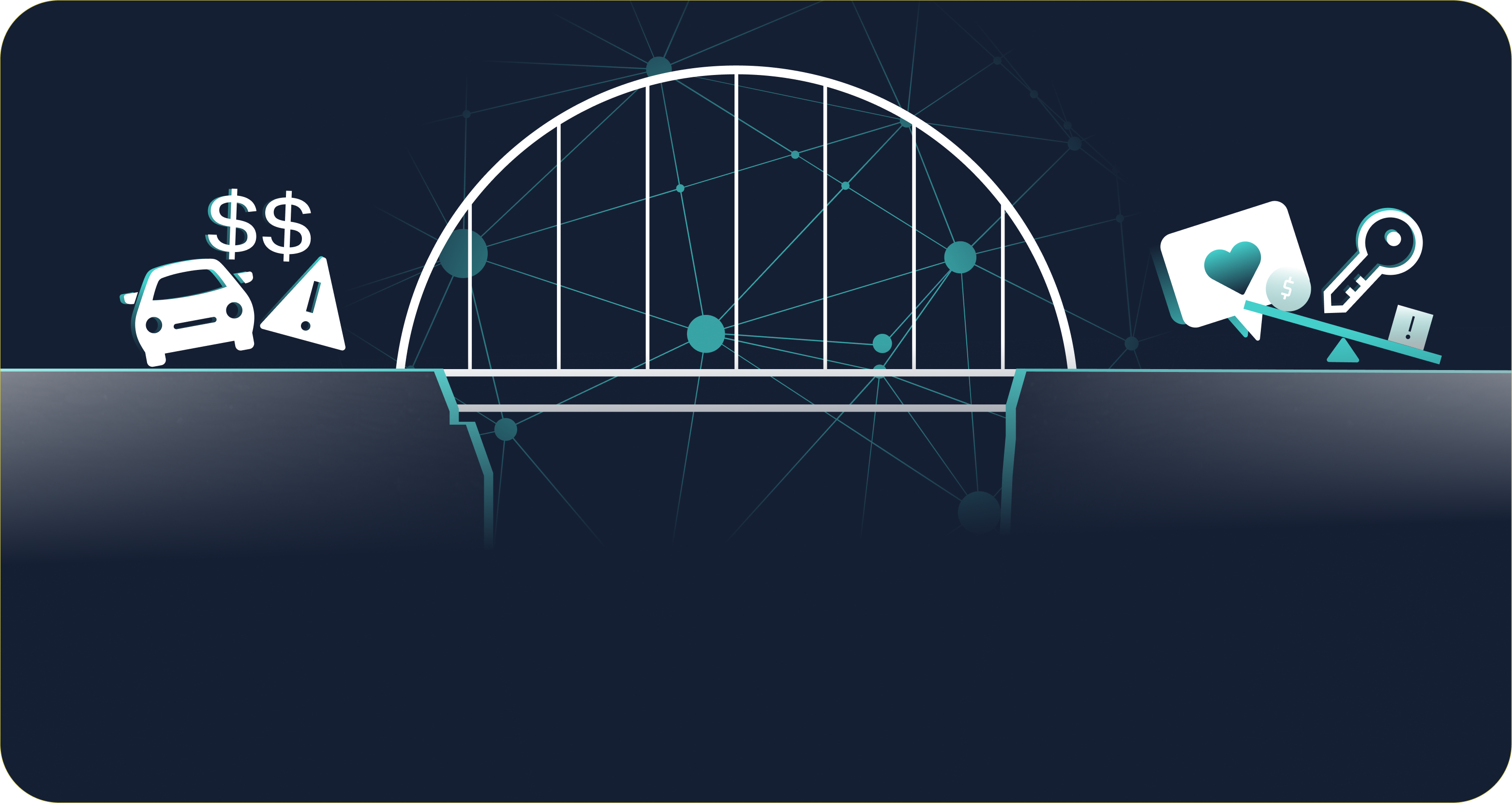How AI and automation fit into your lending process
Every lender has a different appetite for automation and needs to get comfortable with their own process of reaching those goals.
Zest AI’s underwriting technology is designed to deliver better (read: more trustworthy) risk insights because it uses more data and better math than traditional scorecards or linear models. AI credit models are also entirely transparent and fully compliant with fair lending and fair credit regulations. On average, clients see a 20 percent increase in approvals, holding risk constant, when they switch from legacy scoring to AI underwriting. Lenders looking to reduce risk achieve, on average, a 28 percent decrease in charge-offs. Models built with Zest AI’s technology use only your own data from your customers to build a custom model that’s more predictive than generic scorecards.
We tend to believe more customization is a good thing
You don’t go to your family doctor for brain surgery or take your brand new Tesla to the repair shop run by Dave who went to your high school. Unlike traditional linear regression models or off-the-shelf scorecards that have practical limits on the amount of data that can be included, AI models start with hundreds of inputs, and those inputs are then engineered into thousands of different features to choose from. Ultimately, those thousands of features are selected down to the few 100 that have the most predictive value. Tailoring a model in this way to your population and products gives you more precision in the predictions you need to make.
What kind of data are we using? The base data is all FCRA-compliant credit data that can ultimately be mapped to standard adverse action reasons. The additional lift in Zest AI’s models most often comes from a more efficient and comprehensive use of the credit report that you’re already receiving from the bureaus. We’re digging deep into the trade lines, and in doing so, we’re able to get a more comprehensive picture of borrowers and can more accurately identify their level of risk.
In some cases, we can even use first party data like checking account information, but we typically start with the information that you’re already using as part of your credit decisioning process for true apples-to-apples comparison with your current process. We’re not using any creepy social media feeds or features based on where you went to school because, let’s face it, no regulator will accept that you denied someone credit because they went to Harvard or have lots of friends on Facebook. Nor is this some kind of generalized, all-knowing Eye of Sauron AI. It’s a discrete model trained to do one thing well and nothing more.
If the better math used by AI models is so great, then why isn’t everybody using it?
Well, machine learning models are more complex and difficult to explain both to your internal compliance teams and external regulators.
That’s what Zest AI is focused on: providing fully explainable and documented models that meet all compliance requirements. Now, it should be noted that there are some firms out there that use what they refer to as machine learning assisted or MLM forms, scorecards, or models. What they’re doing there is using machine learning processes to engineer a whole bunch of features, and then select down to the small handful that are ultimately going to be put into a logistic regression model or a scorecard so that they can avoid the whole complexity around explainability.
Now, if you’re only going to use 20 or 30 features in all, it makes sense to take the time to identify which ones are going to be the most predictive. But the whole exercise smacks of a reduction-of-force mentality. It’s like saying Susie in operations is a lot more productive than Frank over in maintenance, and so we’re going to have to let Frank go. With machine learning models, we’re not limited by constraints on the number of features or variables that can be included. Frank’s overall contribution may be less than Susie’s, he still has something to offer, and ought to be kept around. The idea is that we want to get the most out of all the data you already own or pay for rather than limit it for the purposes of making it a little easier to understand. We don’t have to trade simplicity for explainability.
Here’s what we call a lift chart. A perfectly straight diagonal line from high risk to low would be something akin to a baseline prediction, but our AI model is predicting a much steeper curve at the higher-risk end and somewhat reduced risk from normal in the middle ranks. Once you’ve established these risk levels, you can go in and identify appropriate cutoff points above which you’re going to approve applicants automatically and below which you’re going to auto-deny applicants. Everyone in the middle gets a manual review. These thresholds can be changed at any time as your trust in the model grows. We can move these vertical dotted lines closer together, so we’re auto-approving or auto-denying a greater percentage of those applicants and sending fewer of them to manual review.

One of our customers was almost entirely manually reviewing all of its applicants when we started working with them two years ago. Today, it’s auto-decisioning well over 80 percent of them. We could have auto-decided 100 percent of their applicants on the first day the model went live, but it took some time for the organization to get comfortable with that kind of automation. Trust is earned over time by proving that predictive results are real.
Now for the IT crowd, who’ve been waiting breathlessly for this diagram of how an AI model fits into a fairly typical loan processing environment. First, a loan is submitted to the loan origination system. Then bureau data is pulled for that particular applicant, and the application and bureau data are passed via an API to your model. Zest AI has built integrations with several LOS providers so they work out of the box.

The model will then return the score and the reasons for that score into the decisioning component of your loan origination system or your decision engine. The scores that meet the auto-decisioning thresholds are approved or declined, with the adverse action reasons mapped directly into your adverse action notice system. If the score falls into the middle group, the application can flow through to any additional policy rules that you might have in place. Those auto-generated adverse action reasons associated with that score will be made available to the manual underwriter to provide insight and direction for requesting additional information.
The importance of monitoring
Trust has to be earned and confidence takes time to grow. But in lending we don’t have the luxury of that much time to conclude a model is working. Auto lending portfolios can take up to 18 months to render a clear verdict that the original prediction was accurate, while change is coming at us constantly in the form of additional growth from a successful marketing effort or a rapid deceleration in credit quality due to a global pandemic. To ensure safe and efficient operation of machine learning models, Zest also deploys monitors along with those models into production.
The purpose of these monitors is to examine consistently and continuously the data that is going into the model, the interactions between the variables within the model, and ultimately the scores that are coming out of the model. Our monitors compare this live production data with the historical information that was used to train the model and will notify us if there’s a difference significant enough to impact the accuracy of the model. We had a model in production with a very large bank in Europe at a time where, because of political upheaval, its currency was being devalued at an astronomical rate. But the Zest monitors in place were able to detect changes in the applicant pool early, changes that were going to impact the model’s ability to accurately predict outcomes. The monitors triggered alerts that helped the bank take proactive steps to avoid the impact felt more heavily by competitors in the market.
Monitoring is continuously made available to our clients so that they can see and review the data at their leisure. We hold regular review sessions with clients to go over model performance and what the monitoring data is telling us, an especially urgent conversation with covid-19’s impacting every lending business. If your through-the-door data looks nothing like the loans your model was trained on, it may be time now to update that model to preserve accuracy.

